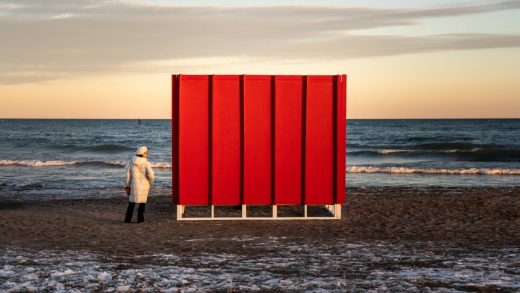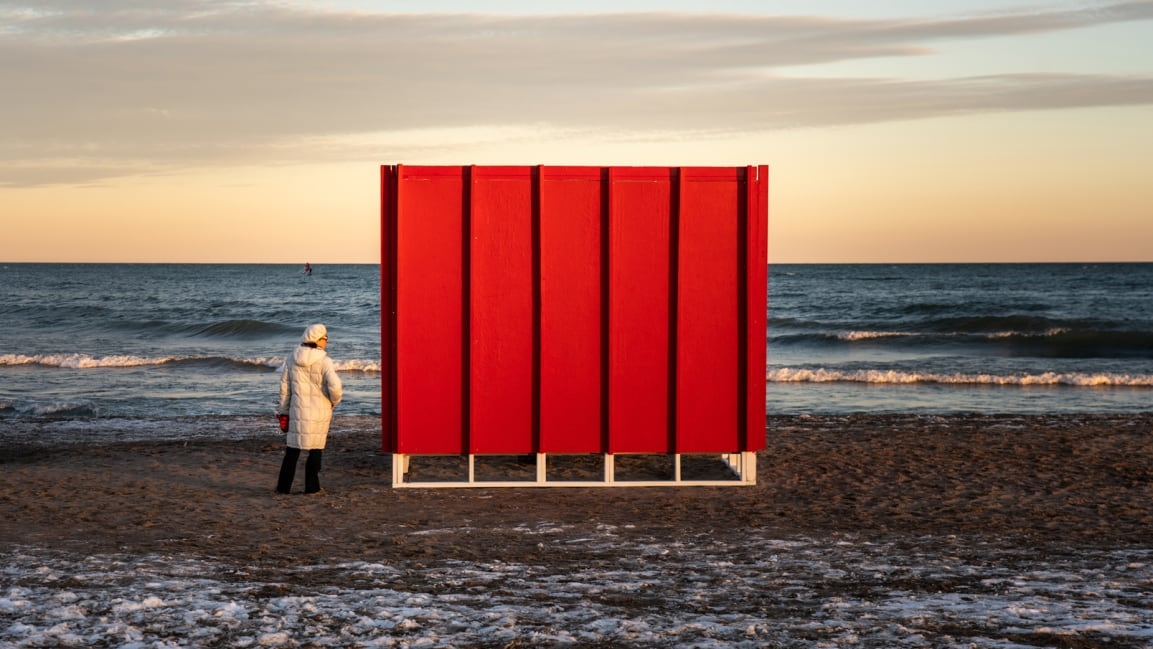These far-out pavilions make going to a frigid Canadian beach worthwhile
It’s hard not to love a day at the beach. But when it’s in the middle of winter and temperatures dip below freezing, a day at the beach takes on a very different meaning.
Toronto, though, has found a way to make a wintertime trip to the beach more appealing. Winter Stations, an annual six-week installation, brings competition-winning architectural pavilions out to the shore, built on and around existing lifeguard stations, to persuade the design-curious to bundle up and come check out these unique buildings in person.
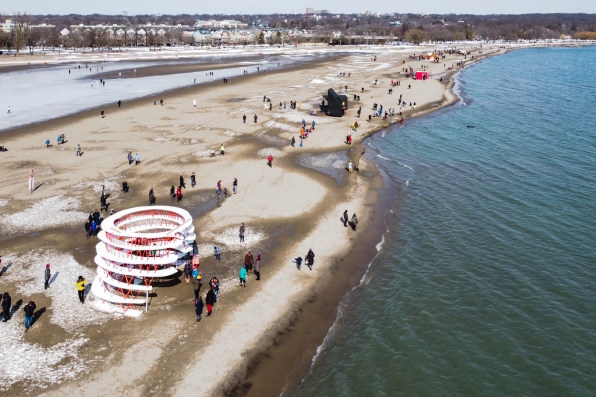
Launched in 2014 by the Toronto-based architecture and design firms Raw Design, Ferris + Associates, and Curio, the project attempts to inject some activity into the frigid winter beach scene along Lake Ontario through an international design competition. This year’s edition features three winning designs, along with three pavilions created by student teams from area universities. Winning designs include a beehive-inspired geodesic dome, a pair of dark box structures with light-distorting viewports, and a totem-like stack of rings, inspired by teachings of the Anishinaabe People.

Now, instead of being displayed on the beach for the event’s month-and-a-half run and then disappearing, the pavilions may be moving around the city.
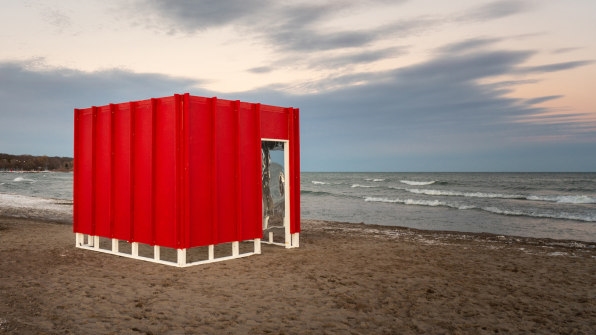
“We like the idea of sprinkling the stations in different locations, getting people to navigate through the city to see the different ones, and to enable people that can’t travel to be closer to them. There’s a lot of opportunity,” says Dakota Wares-Tani, an architect at Raw Design and one of the team of volunteers who run the program.
It’s an idea spawned by the pandemic, which almost derailed last year’s event. “Because the city wasn’t allowing any public events and gatherings on public property or parks, we couldn’t even do it on the beach,” says Wares-Tani. “So we really had to crunch down and figure out what we were going to do.”
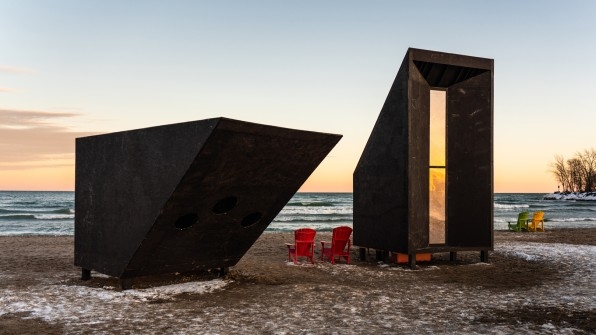
In conjunction with some of the event’s sponsors, the organizers decided to try again later. The five winning designs were installed in the early summer in various public spaces throughout the city, including Toronto’s Distillery District and Queen Street, a busy waterfront shopping area. “The pandemic really led to the opportunity for us to exhibit Winter Stations in different seasons and different environments,” says Wares-Tani. That also left the beach’s actual lifeguard stations for their intended duty during summer’s high season.

This winter, the pavilions are back on the beach, except for one. In the spirit of taking the event beyond its original lakeside location, one pavilion is starting out in the nearby city of Hamilton before joining the others in Toronto in early March. At the end of the installation, organizers plan for the pavilions to head to other spots around the city. Wares-Tani says the exact locations haven’t yet been determined, but they’re likely to go to other well-used spaces like shopping streets or other public parks around the city.
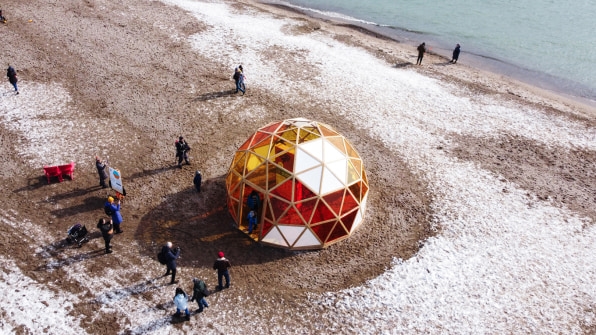
From there, the pavilions may have second or even third lives. For the past few years, the pavilions have been built with more weather-proof materials, creating better chances of reusing them. Wares-Tani says she’s hoping some of the pavilions will even find permanent homes on the campuses of schools or outside businesses. “Having multiple exhibitions does extend the life of these,” she says. “It’s not just fast fashion, like it’s disposable.”
(16)

